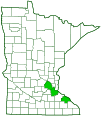many-headed slime
(Badhamia polycephala)
Conservation • Description • Habitat • Ecology • Distribution • Taxonomy
|
|
|||||||||||||
Description |
Many-headed slime is a plasmodial slime mold. It has been reported in Europe, Asia, Australia, Africa, North America, and South America. Most reports are from the eastern United States. All but a few plasmodial slime molds are invisible to the naked eye, are usually overlooked, and are little studied. Many-headed slime is an exception in all respects. It is most often found on a growth medium (agar) in laboratories, where it is frequently used in researching cell development, protoplasmic streaming, and nuclear behavior. In one interesting study it was “shown” that it “solved” a maze. In nature it is found on shaded rotting wood in forests, in woodlands, and even in treed suburbs. It is short lived, appearing after a soaking rain and disintegrating in just a few days. Many-headed slime lives in rotting wood feeding on fungi and bacteria. In late summer and fall, after a soaking rain, it creeps to the surface of the substrate. It appears as a bright yellow, many-branched network of veins that creep along the surface. Protoplasm can be seen streaming within the veins. When exposed to light it produces spore-bearing structures (sporangia). The sporangia differ from other slime molds in having multiple heads, hence the common name many-headed slime. |
Similar Species |
Habitat and Hosts |
Forests, woodlands, and suburbs on shaded rotting wood |
Ecology |
Season |
Late summer and fall |
Distribution |
||
|
Sources Biodiversity occurrence data published by: Minnesota Biodiversity Atlas (accessed through the Minnesota Biodiversity Atlas Portal, bellatlas.umn.edu, 7/1/2025). |
|
| 7/1/2025 | ||
Occurrence |
||
Widespread but not common |
||
Taxonomy |
|
| Kingdom | Protozoa (protozoans) |
| Phylum | Mycetozoa (slime molds) |
| Class | Myxomycetes (true slime molds) |
| Subclass | Columellomycetidae |
| Superorder | Stemonitidia |
| Order | Physarales |
| Family | Physaraceae |
Genus |
Badhamia |
Genus Higher ranking |
|
Subordinate Taxa |
|
|
|
Synonyms |
|
Didymium gyrocephalum Didymium luteogriseum Didymium obrusseum Didymium polycephalum Didymium polymorphum Didymium tenerrimum Lignydium multiplex Lignydium obrusseum Lignydium polycephalum Lignydium polymorphum Physarum multiplex Physarum obrusseum Physarum polycephalum Physarum polycephalum ssp. obrusseum Physarum polymorphum Physarum polymorphum ssp. obrusseum Physarum polymorphum var. obrusseum Tilmadoche gyrocephala Tilmadoche polycephala |
|
Common Names |
|
many-headed slime |
|
Glossary
Sporangium
A spore bearing structure, as of a fern, moss, or slime mold. Plural: sporangia.
Visitor Photos |
||
Share your photo of this slime mold. |
||
This button not working for you? |
||
|
||
MinnesotaSeasons.com Photos |
||
Hours after a soaking rain ... |
||
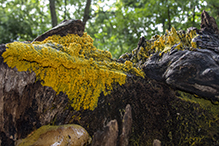 |
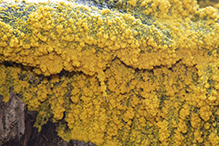 |
|
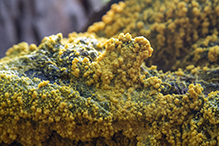 |
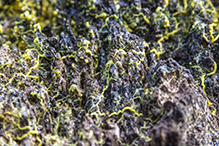 |
|
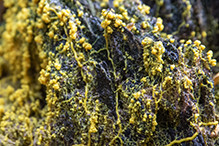 |
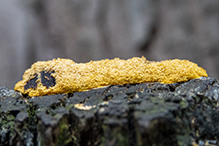 |
|
... and two days later |
||
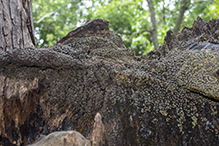 |
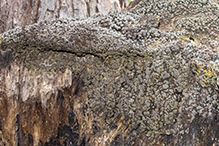 |
|
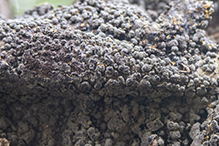 |
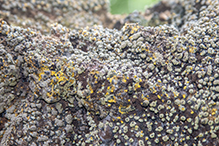 |
|

Slideshows |
|

Visitor Videos |
||
Share your video of this slime mold. |
||
This button not working for you? |
||
|
Other Videos |
||
Mould Time-lapse - The Great British Year: Episode 4 Preview - BBC One |
About
Oct 18, 2013 Subscribe and 🔔 to OFFICIAL BBC YouTube 👉 https://bit.ly/2IXqEIn More about this programme: http://www.bbc.co.uk/programmes/p01dflmb A yellow slime mould moves across the forest floor, searching for its white fungus food source. #bbc Caption author (English) |
What Has No Brain, 720 Sexes, And the Ability to Self-Heal?! |
About
Dec 23, 2019 |
How This Blob Solves Mazes | WIRED |
About
Oct 25, 2019 Physarum polycephalum is a single-celled, brainless organism that can make “decisions,” and solve mazes. Anne Pringle, who is a mycologist at the University of Wisconsin-Madison, explains everything you need to know about what these slime molds are and how they fit into our ecosystem. Still haven’t subscribed to WIRED on YouTube? ►► http://wrd.cm/15fP7B7 Also, check out the free WIRED channel on Roku, Apple TV, Amazon Fire TV, and Android TV. Here you can find your favorite WIRED shows and new episodes of our latest hit series Tradecraft. ABOUT WIRED How This Blob Solves Mazes | WIRED |

Visitor Sightings |
||
Report a sighting of this slime mold. |
||
This button not working for you? |
||
|
|
MinnesotaSeasons.com Sightings |
||
Burnsville, MN |

Created: 8/15/2020 Last Updated: © MinnesotaSeasons.com. All rights reserved. |
